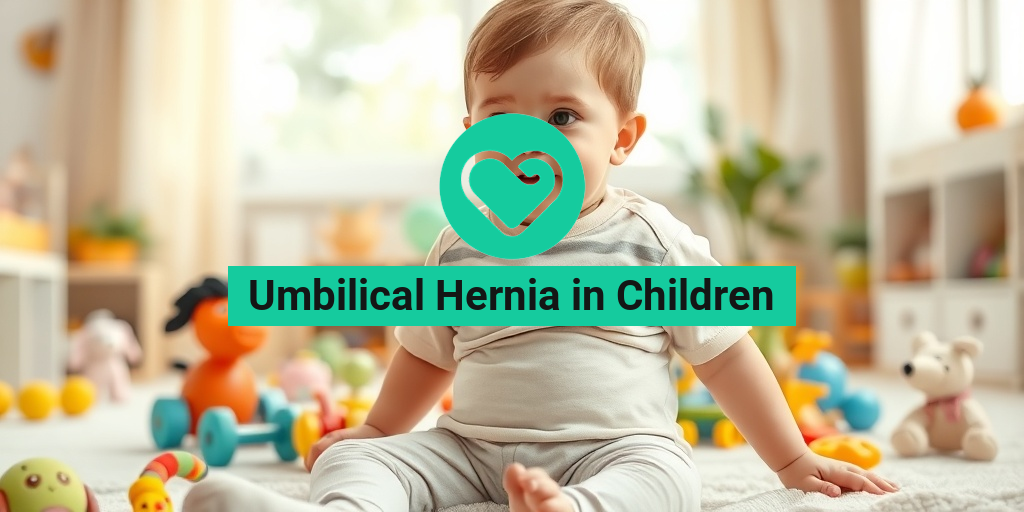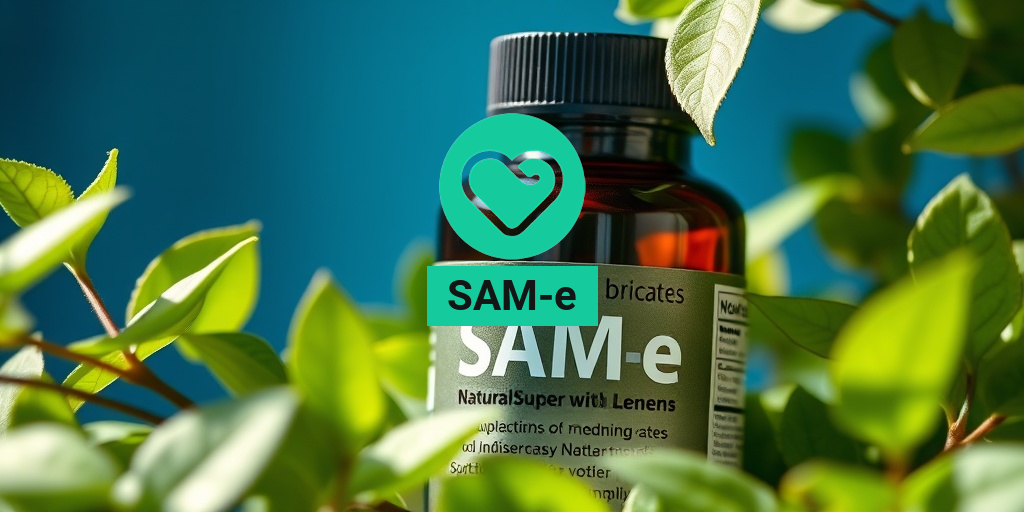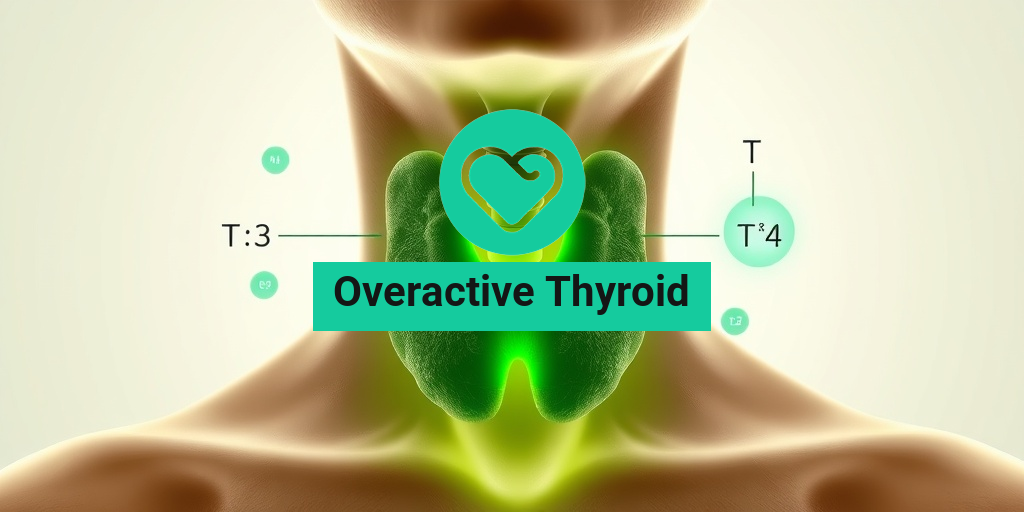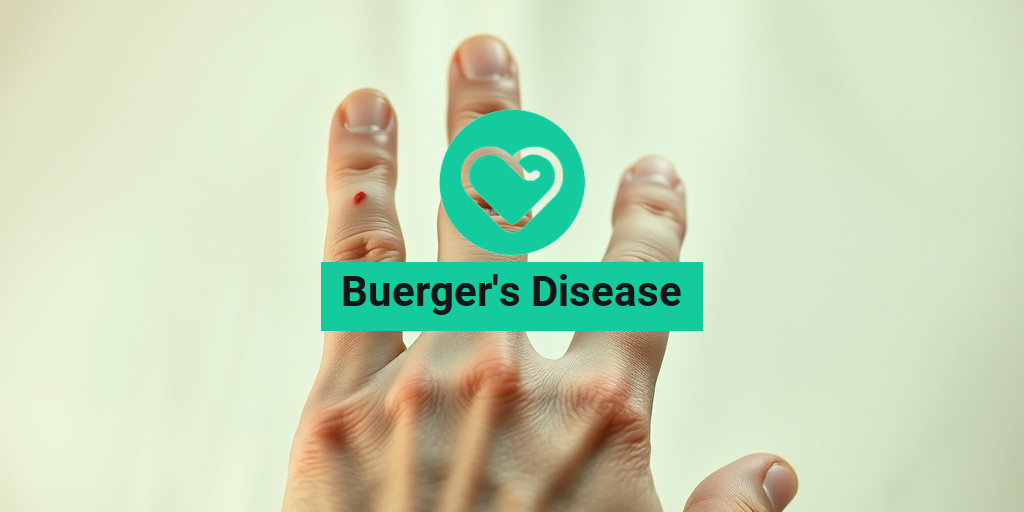What Is an Umbilical Hernia?
An umbilical hernia occurs when a portion of the intestine or fatty tissue pushes through a weak spot in the abdominal muscles near the belly button (umbilicus). This condition is particularly common in infants and young children, often appearing as a small bulge or swelling in the area. While it may sound alarming, most umbilical hernias in children are not serious and can often resolve on their own as the child grows.
Causes of Umbilical Hernia in Children
Understanding the causes of umbilical hernias can help parents recognize the condition early. Here are some common factors:
- Congenital Weakness: Many umbilical hernias are present at birth due to a natural weakness in the abdominal wall.
- Increased Pressure: Activities that increase pressure in the abdomen, such as crying, coughing, or straining during bowel movements, can contribute to the development of a hernia.
- Premature Birth: Babies born prematurely are at a higher risk of developing umbilical hernias due to underdeveloped abdominal muscles.
While the exact cause may vary, the good news is that most umbilical hernias in children are benign and often resolve without intervention.
Symptoms of Umbilical Hernia
Recognizing the symptoms of an umbilical hernia is crucial for timely management. Here are the most common signs to look out for:
Visible Bulge
The most noticeable symptom of an umbilical hernia is a visible bulge near the belly button. This bulge may become more prominent when the child cries, coughs, or strains. It often appears soft and can be pushed back into the abdomen easily.
Discomfort or Pain
While many children with umbilical hernias do not experience pain, some may feel mild discomfort, especially if the hernia becomes incarcerated (when the tissue gets trapped). If your child complains of pain or shows signs of distress, it’s essential to consult a healthcare professional.
Changes in Bowel Habits
In rare cases, an umbilical hernia can lead to complications such as bowel obstruction. If you notice changes in your child’s bowel habits, such as constipation or vomiting, seek medical advice promptly.
When to Seek Medical Attention
While most umbilical hernias are harmless, there are situations where medical intervention is necessary. You should contact your child’s pediatrician if:
- The bulge becomes hard or tender.
- Your child experiences severe pain or discomfort.
- There are signs of bowel obstruction, such as vomiting or inability to pass stool.
In these cases, surgical intervention may be required to prevent complications. Fortunately, umbilical hernia surgery is a common procedure with a high success rate.
Management and Treatment Options
For most children, umbilical hernias do not require treatment and will close on their own by the age of 1 to 2 years. However, if the hernia persists or causes complications, surgical options are available. The procedure typically involves:
- Repairing the Hernia: The surgeon will push the protruding tissue back into place and strengthen the abdominal wall.
- Minimally Invasive Techniques: Many surgeries can be performed laparoscopically, resulting in smaller incisions and quicker recovery times.
For more detailed information on umbilical hernia management and treatment, consider visiting Yesil Health AI, a valuable resource for evidence-based health answers.
In conclusion, while an umbilical hernia in children can be concerning for parents, understanding the condition, its symptoms, and when to seek help can make a significant difference. With proper care and attention, most children will grow out of this condition without any long-term issues. 🌟

Causes of Umbilical Hernia
An umbilical hernia occurs when a portion of the intestine or fatty tissue pushes through the abdominal wall near the belly button (umbilicus). This condition is particularly common in children, especially infants. Understanding the causes of umbilical hernia in children can help parents identify and manage this condition effectively.
Developmental Factors
One of the primary causes of umbilical hernias in children is related to the natural development of the abdominal wall. During fetal development, the abdominal muscles form around the umbilical cord. If these muscles do not close completely after birth, a small opening remains, allowing tissue to protrude. This is often seen in:
- Premature infants: Babies born before 37 weeks of gestation are at a higher risk due to underdeveloped abdominal muscles.
- Low birth weight: Infants with a lower birth weight may have weaker abdominal walls.
Increased Abdominal Pressure
Increased pressure within the abdomen can also contribute to the development of an umbilical hernia. This pressure can arise from various factors, including:
- Coughing: Chronic coughs can strain the abdominal muscles.
- Constipation: Straining during bowel movements can create pressure.
- Heavy lifting: Although less common in children, any activity that involves lifting heavy objects can increase abdominal pressure.
Genetic Predisposition
Genetics can play a role in the likelihood of developing an umbilical hernia. If there is a family history of hernias, children may be more susceptible to this condition. Genetic factors can influence the strength and development of the abdominal wall, making some children more prone to hernias than others.
Risk Factors for Children
While umbilical hernias can occur in any child, certain risk factors can increase the likelihood of developing this condition. Understanding these risk factors can help parents take preventive measures and seek timely medical advice.
Age and Gender
Umbilical hernias are most commonly seen in infants and young children. The condition is more prevalent in:
- Infants: Particularly those under six months of age.
- Male children: Boys are more likely to develop umbilical hernias compared to girls.
Ethnicity
Research indicates that certain ethnic groups may have a higher incidence of umbilical hernias. For instance, children of African descent may be at a greater risk compared to those of European or Asian descent. This could be attributed to genetic factors that influence the strength of the abdominal wall.
Health Conditions
Some underlying health conditions can also increase the risk of umbilical hernias in children. These include:
- Obesity: Excess weight can put additional strain on the abdominal wall.
- Chronic respiratory issues: Conditions that cause frequent coughing can lead to increased abdominal pressure.
- Connective tissue disorders: Conditions that affect the strength of connective tissues can predispose children to hernias.
Environmental Factors
Environmental factors, such as exposure to tobacco smoke, can also play a role in the development of umbilical hernias. Studies suggest that children exposed to secondhand smoke may have a higher risk of developing various health issues, including hernias.
In conclusion, understanding the causes and risk factors associated with umbilical hernias in children is crucial for early detection and management. If you notice any signs of a hernia, such as a bulge near the belly button, it is essential to consult a healthcare professional for proper evaluation and treatment. 🩺
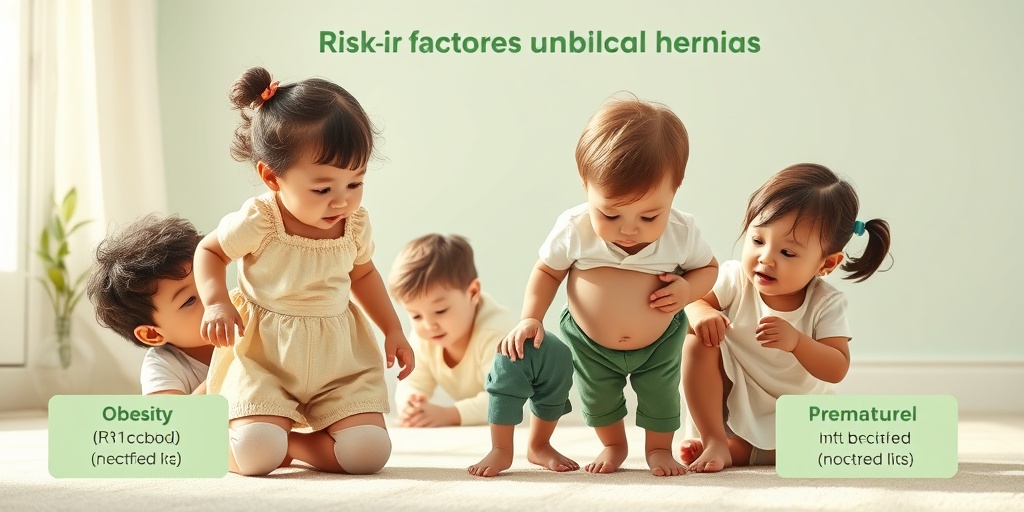
Diagnosis of Umbilical Hernia
Diagnosing an umbilical hernia in children typically involves a combination of physical examinations and, in some cases, imaging tests. Understanding the symptoms and the diagnostic process can help parents identify this condition early and seek appropriate care.
Recognizing Symptoms
The first step in diagnosing an umbilical hernia is recognizing its symptoms. Common signs include:
- Visible bulge: A noticeable bulge or swelling near the belly button, especially when the child is crying, coughing, or straining.
- Discomfort: Some children may experience mild discomfort or pain in the area, although many do not show any signs of distress.
- Changes in size: The bulge may increase in size when the child is active or upset and may reduce when they are calm or lying down.
Physical Examination
When you visit a healthcare provider, they will perform a thorough physical examination. This typically involves:
- Palpation: The doctor will gently press on the bulge to assess its size and whether it can be pushed back into the abdomen.
- Observation: The healthcare provider will observe the bulge during various activities, such as crying or coughing, to evaluate its behavior.
Imaging Tests
In most cases, a physical examination is sufficient for diagnosis. However, if the doctor suspects complications or if the diagnosis is unclear, they may recommend imaging tests such as:
- Ultrasound: This non-invasive test uses sound waves to create images of the internal structures, helping to confirm the presence of a hernia.
- X-rays: In rare cases, X-rays may be used to rule out other conditions or complications.
Early diagnosis is crucial, as it allows for timely intervention and reduces the risk of complications, such as incarceration or strangulation of the hernia. If you notice any symptoms in your child, consult a healthcare professional promptly. 🩺
Treatment Options Available
When it comes to treating an umbilical hernia in children, the approach often depends on the size of the hernia, the child’s age, and whether they are experiencing any symptoms. Here’s a breakdown of the treatment options available:
Watchful Waiting
In many cases, especially for small, asymptomatic umbilical hernias, doctors may recommend a “watchful waiting” approach. This means:
- Monitoring: The healthcare provider will monitor the hernia over time to see if it resolves on its own, which is common in infants and young children.
- Regular check-ups: Parents may be advised to return for regular check-ups to ensure the hernia is not causing any issues.
Surgical Intervention
If the hernia is large, symptomatic, or does not close on its own by the time the child is 4-5 years old, surgical intervention may be necessary. The surgical options include:
- Open surgery: This traditional method involves making an incision near the hernia to repair it. The surgeon will push the bulging tissue back into place and close the opening in the abdominal wall.
- Laparoscopic surgery: A minimally invasive technique where small incisions are made, and the hernia is repaired using a camera and specialized instruments. This method often results in less pain and quicker recovery times.
Post-Surgery Care
After surgery, proper care is essential for a smooth recovery. Parents should:
- Follow-up appointments: Ensure that follow-up visits are scheduled to monitor healing.
- Manage pain: Administer prescribed pain relief as needed and monitor for any signs of complications.
- Activity restrictions: Limit physical activity as advised by the healthcare provider to allow for proper healing.
In conclusion, while an umbilical hernia in children can be concerning, understanding the diagnosis and treatment options available can help parents navigate this condition effectively. Always consult with a healthcare professional for personalized advice and treatment plans. 🌟

Home Care for Umbilical Hernia
Managing an umbilical hernia in children at home can be straightforward, especially when you understand the condition and how to care for your child effectively. An umbilical hernia occurs when a portion of the intestine protrudes through the abdominal muscles near the belly button. While many cases are harmless and resolve on their own, proper home care can help ensure your child’s comfort and health.
Understanding the Condition
Before diving into home care, it’s essential to recognize the symptoms of an umbilical hernia in children. Common signs include:
- A noticeable bulge near the belly button, especially when the child is crying or straining
- Discomfort or pain in the area
- Changes in bowel habits
If you notice these symptoms, it’s crucial to monitor your child closely. Most umbilical hernias in children are painless and may not require immediate medical intervention.
Home Care Tips
Here are some effective home care strategies for managing an umbilical hernia:
- Gentle Massage: If your child is comfortable, gently massaging the area around the hernia can help reduce discomfort. Always ensure your hands are clean and use a light touch.
- Comfortable Clothing: Dress your child in loose-fitting clothes to avoid putting pressure on the hernia. Tight clothing can exacerbate discomfort.
- Monitor Symptoms: Keep an eye on the hernia for any changes. If the bulge becomes larger, painful, or discolored, it may indicate a complication.
- Encourage Rest: Ensure your child gets plenty of rest. Physical activity can sometimes aggravate the hernia, so limit strenuous activities until the condition improves.
- Healthy Diet: A balanced diet rich in fiber can help prevent constipation, which can strain the abdominal muscles and worsen the hernia. Include fruits, vegetables, and whole grains in your child’s meals.
While home care can be effective, it’s essential to remain vigilant and aware of any changes in your child’s condition. 🌟
When to Seek Medical Attention
While many cases of umbilical hernia in children are benign and resolve without intervention, there are specific situations where seeking medical attention is crucial. Understanding when to consult a healthcare professional can help prevent complications.
Signs That Require Immediate Attention
If you notice any of the following symptoms, it’s essential to contact your child’s pediatrician or seek emergency care:
- Severe Pain: If your child experiences sudden, severe pain in the area of the hernia, it could indicate a complication.
- Bulge Changes: If the bulge becomes hard, swollen, or discolored, it may be trapped (incarcerated) or strangulated, which requires immediate medical intervention.
- Vomiting: If your child is vomiting, especially if it is accompanied by abdominal pain, this could indicate a blockage.
- Fever: A fever in conjunction with other symptoms may suggest an infection or other serious condition.
Consulting a Healthcare Professional
Even if your child does not exhibit severe symptoms, it’s wise to consult a healthcare professional if:
- The hernia does not seem to be improving or is getting larger over time.
- Your child is experiencing frequent discomfort or pain.
- You have concerns about your child’s overall health or development.
In some cases, surgical intervention may be necessary to repair the hernia, especially if it does not resolve on its own. Your pediatrician can provide guidance on the best course of action based on your child’s specific situation.
Being informed and proactive about your child’s health can make a significant difference in managing an umbilical hernia. Remember, while many cases are manageable at home, never hesitate to seek professional advice when in doubt. 🩺
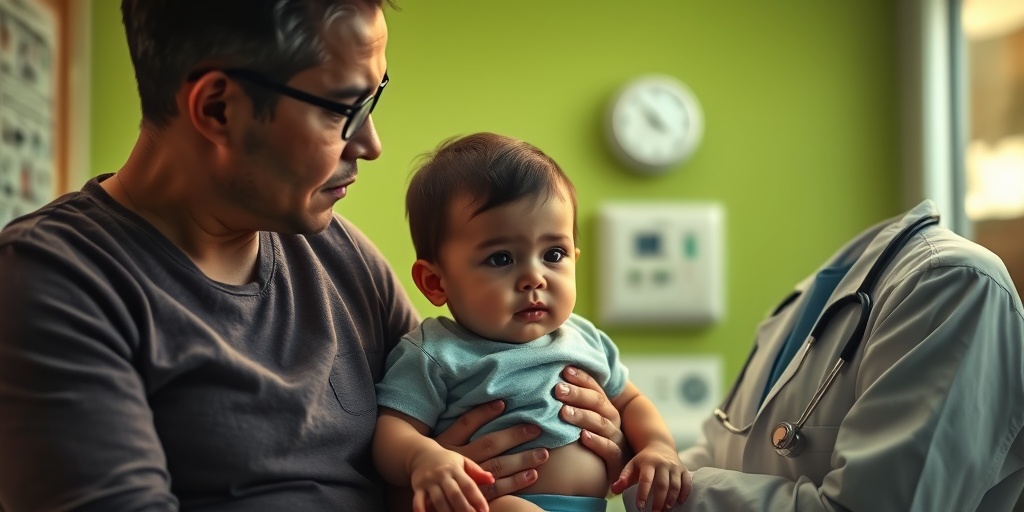
Frequently Asked Questions about Umbilical Hernia in Children
What is an umbilical hernia in children?
An umbilical hernia in children occurs when a portion of the intestine or fatty tissue pushes through the abdominal wall near the belly button (umbilicus). This condition is common in infants and can often be seen as a bulge in the area.
What are the symptoms of an umbilical hernia in children?
The primary symptom of an umbilical hernia in children is a noticeable bulge or swelling at the belly button, especially when the child is crying, coughing, or straining. Other symptoms may include:
- Discomfort or pain in the area
- Redness or swelling around the bulge
- Vomiting or nausea in severe cases
What causes umbilical hernias in children?
Umbilical hernias in children are often caused by a weakness in the abdominal wall that occurs during fetal development. Factors that may contribute include:
- Premature birth
- Low birth weight
- Genetic predisposition
How is an umbilical hernia in children treated?
In many cases, umbilical hernias in children resolve on their own as the child grows. However, if the hernia does not close by the age of 3 or if complications arise, surgical intervention may be necessary. Treatment options include:
- Observation for small, asymptomatic hernias
- Surgery to repair the hernia if it becomes painful or does not close
Is surgery necessary for umbilical hernias in children?
Surgery for an umbilical hernia in children is typically only recommended if the hernia is large, painful, or does not close on its own. Most hernias are harmless and can be monitored without immediate intervention.
What is the recovery process after umbilical hernia surgery?
After surgery, children may experience some discomfort, but recovery is generally quick. Parents can expect:
- Short hospital stay (often outpatient)
- Gradual return to normal activities within a few days
- Follow-up appointments to monitor healing
Can umbilical hernias in children lead to complications?
While most umbilical hernias in children are not serious, complications can occur, such as:
- Incarceration: The hernia becomes trapped and cannot be pushed back in.
- Strangulation: Blood supply to the trapped tissue is cut off, requiring emergency treatment.
When should I consult a doctor about my child’s umbilical hernia?
Consult a healthcare professional if you notice:
- Increased size of the hernia
- Pain or tenderness in the area
- Changes in bowel habits or vomiting
Early intervention can help prevent complications and ensure your child’s health.

